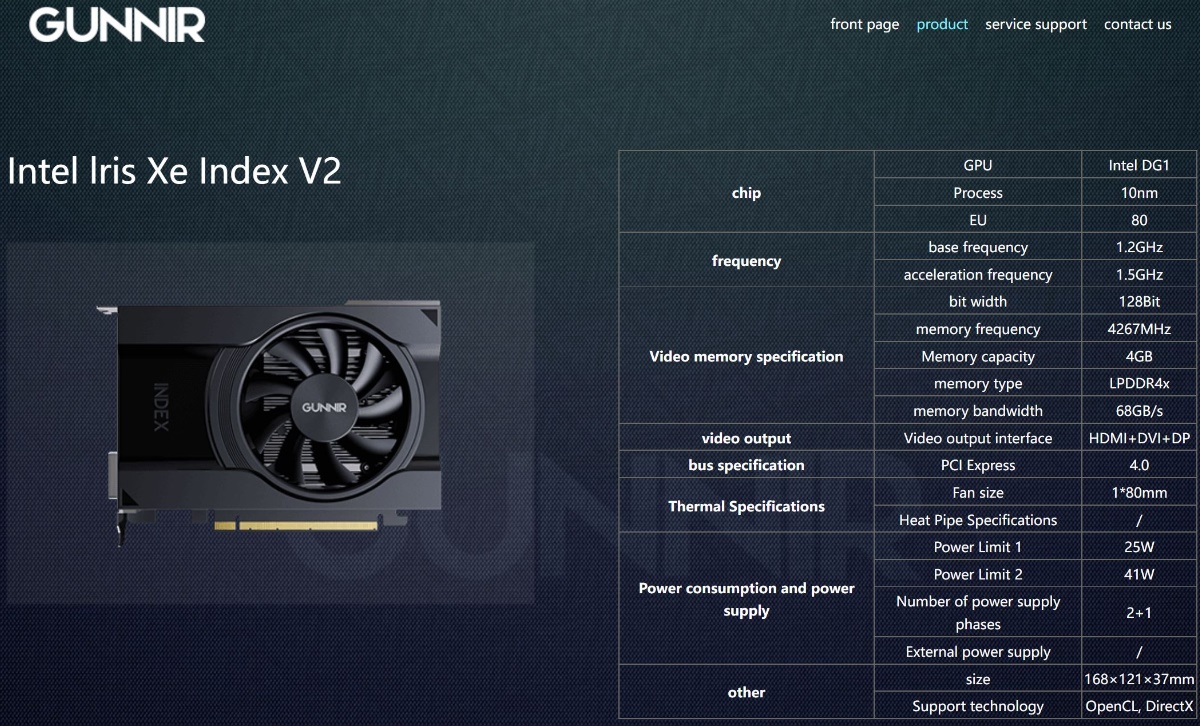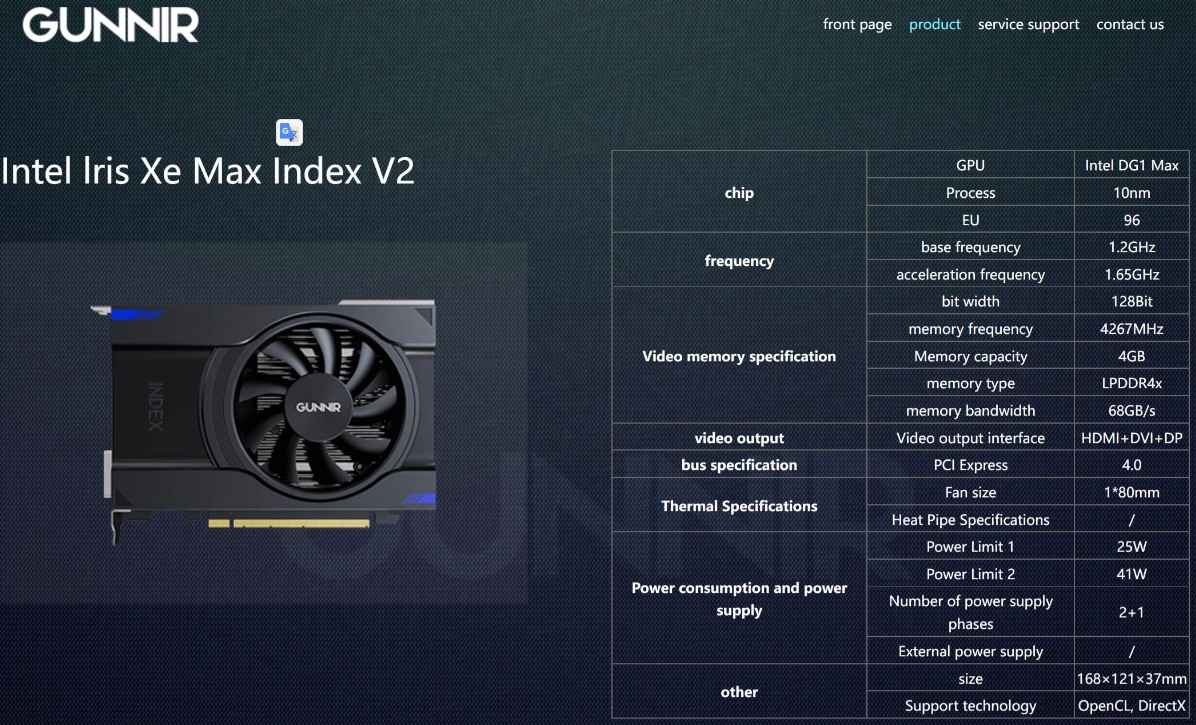Gunnir Introduces Intel's DG1 Iris Xe Graphics in Discrete Desktop Format
A full DG1, one month before DG2 launches
Chinese specialist Gunnir, for reasons that are difficult to parse, has decided to deploy a full line of Intel DG1 desktop graphics cards. Intel's DG1 was originally developed as an integrated graphics solution and distributed as a way for developers to start tinkering and programming for Intel's new graphics architecture. It was also available as the Intel DG1 SDV (software development vehicle), and eventually released in a limited fashion for pre-built desktop PCs.
But where there's a will, there's a way. Customers can now install one of three Intel DG1 cards in their desktop PCs. The product is not without its caveats, however, and seems like it will mostly be interesting to collectors. (Hat tip to VideoCardz for surfacing the story.)
Distributed as two SKUs (the DG1 Iris Xe and Iris Xe Max), Gunnir elected to package these graphics solutions in a PCIe form-factor, carving three products from Intel's test silicon. The lower-performance Iris Xe is available in both low-profile and standard profile solutions, packing a total of 80 EUs (Execution Units) for a total of 640 graphics cores, operating at 1.2 GHz base and 1.5 GHz boost clocks. These are basically the same as the DG1 we've previously tested.
The more interesting card uses Iris Xe Max, marketed as the Gunnir Iris Xe MAX Index V2. It follows the same general design as the Index V2 but features the full core configuration, packing a total of 96 EUs and 768 cores at an operating frequency of 1.2 GHz base and increased 1.65 GHz boost clocks. It also includes some blue accents that are missing from the 80 EU variant.
All SKUs offer the same display outputs (1x HDMI, 1x DisplayPort, and 1x DVI-D) and single-fan active cooling.


Since DG1 was intended more as an integrated graphics solution meant to be distributed in mobile form-factors, performance of these Intel graphics cards isn't the best. When we benchmarked Intel's DG1, we described it as the "little engine that couldn't" due to its low performance capabilities. The benchmarks were enough to put in on-par (or slightly behind) the performance of AMD's RX 550 4 GB... from 2017.
Part of the reason for this performance difference lies in the graphics memory subsystem. The DG1 operates with a 4GB LPDDR4x memory pool, owing to its integrated graphics roots. Another element of note relates to power consumption: while AMD's RX 550 is rated for a 50W TDP, the Intel DG1 products launched by Gunnir are all rated for 21W PL1 (Power Limit 1) or 41W PL2. And like AMD's latest RX 6500 XT graphics card, the DG1 cards are only capable of interfacing at PCIe 4.0 x4 speeds.
Beyond these performance and efficiency considerations, actual system compatibility of Intel's DG1 (and Gunnir's solution) is the elephant in the room that will put off most users who might want an Intel discrete graphics card in their system, at least until the actual high-performance Intel Arc Alchemist family of GPUs is launched in the coming months. The DG1 can only be made to operate when paired with 9th Gen (Coffee Lake-S) and 10th Gen (Comet Lake-S) Intel Core desktop processors, as well as Intel B460, H410, B365, and H310C chipset-based motherboards. And even if you do possess a system that ticks all of those boxes, these motherboards require a special BIOS that supports Intel Iris Xe.
That means you can't use the Gunnir DG1 cards with any AMD-based system, or with any Intel system using a Z-series chipset, or the more recent Rocket Lake and Alder Lake CPUs — not that you'd want to use a DG1 card with a higher end setup.
If none of these caveats put a dent in your determination to have an Intel-powered discrete card feeding your monitor's pixels, Gunnir is selling its DG1-based products at relatively adequate pricing according to their performance profile. The low-profile Gunnir DG1 with Iris Xe is available for $90, the standard profile Iris Xe DG1 ups the price tag to $101, and the highest-performing Gunnir Iris Xe MAX Index V2 is priced at $110.
Given Intel will likely have DG2 (Arc Alchemist) discrete products available in the next few months with much better compatibility and performance, we'd suggest waiting for those rather than investing in these particular solutions.
Get Tom's Hardware's best news and in-depth reviews, straight to your inbox.

Francisco Pires is a freelance news writer for Tom's Hardware with a soft side for quantum computing.